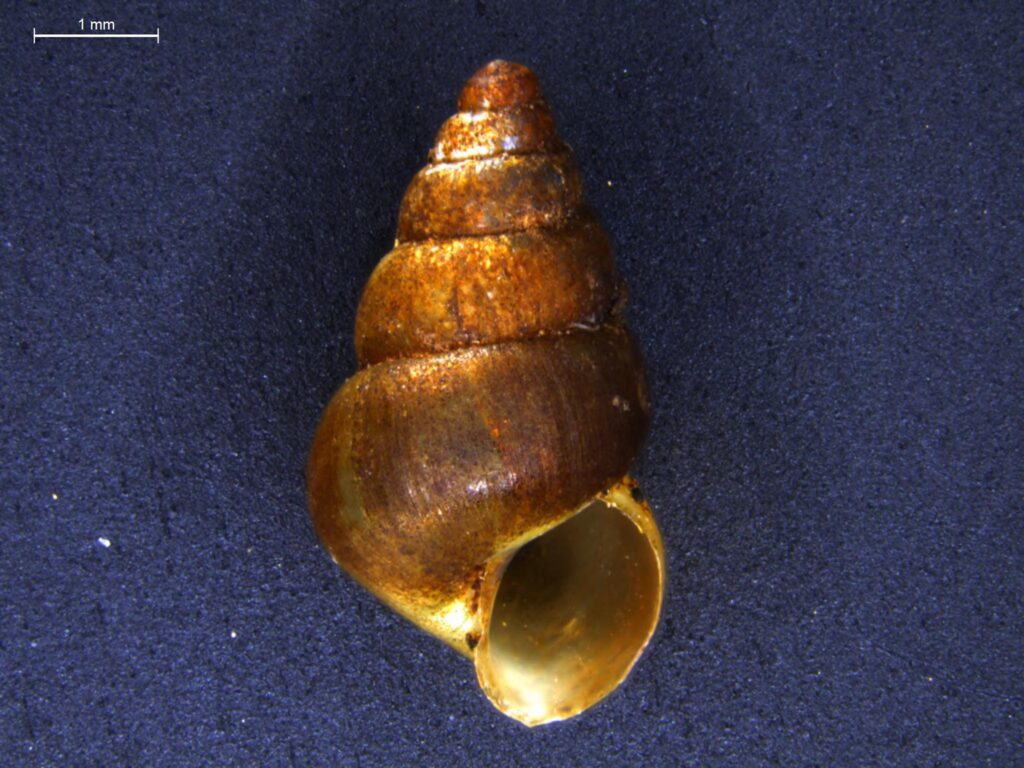


Image Usage Information
Family: Pomatiopsidae
Common name: Slender Walker
Discovery: Say, 1817
Identification
Height: ~5.5-8.5 mm
Width: ~2.5-3.5 mm
Whorls: ~6.0-7.5
This amphibious snail and its sister species may have more in common with aquatic snails than with land snails. They have an operculum and vestigial gills. The animal is dark, and its shell dark reddish-brown. The shell has rounded whorls with impressed sutures. The apex is acute, the aperture simple (Jokinen, 1992). Shells are dimorphic, with male shells being narrower and having more whorls.
Ecology
Despite its semi-aquatic characteristics, P. lapidaria is usually found out of water on mud or debris near wetlands and streams, and in riparian forest, sometimes more than 100 meters from permanent water. Colonies among leaf litter and rocks can be dense, and they appear to favor calcium-rich habitats.
In Michigan, there are two breeding periods, in early summer and in fall (Dundee, 1957). The sex ratio of females to males is approximately 3:1. Mating is during wetter periods, with the male approaching and crawling upon the female to initiate copulation, which may last for two to 10 hours. Two dozen or more eggs are laid singly in the damp litter or soil (not in water), and hatch in five to seven weeks. Adults live up to three years, but rarely crawl more than two meters from where they were born.
Taxonomy
There are no synonyms.
Distribution
Pomatiopsis lapidaria is widespread in eastern North America. Virginia specimens have been found in scattered locations but are concentrated in the western counties.
Conservation
NatureServe Global Rank: G5
NatureServe State Rank: S4
